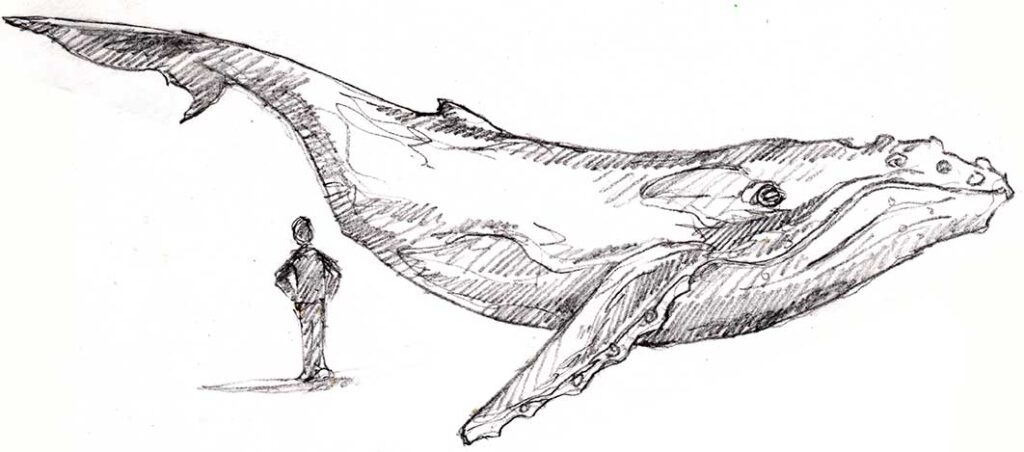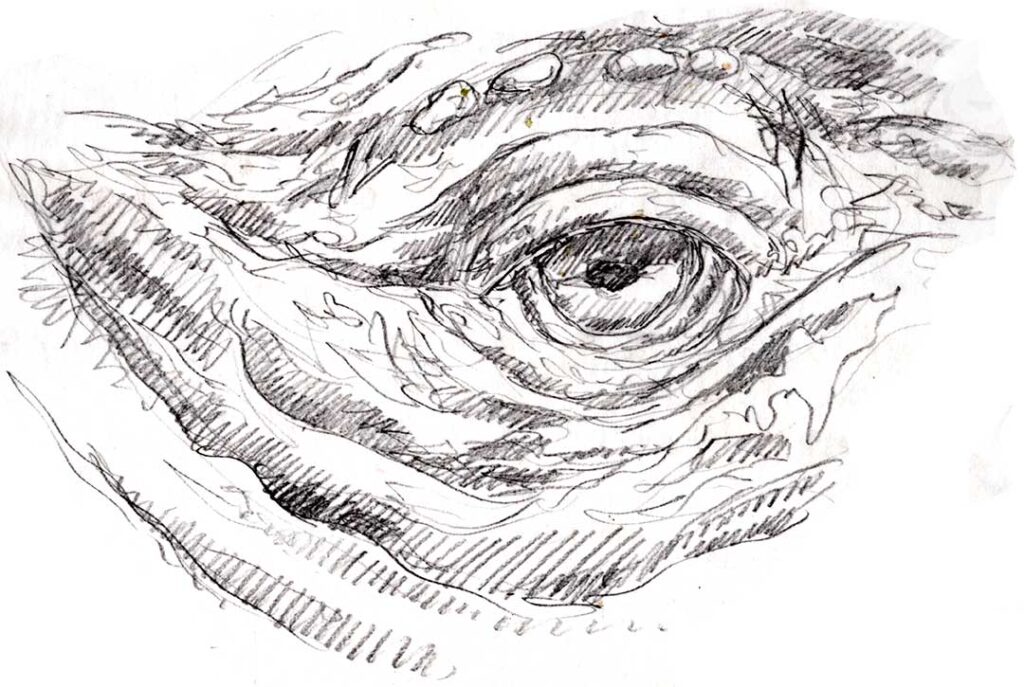This art and the story at the bottom were published as my page in 48 North magazine a few months ago, December 2020. I just haven’t found time to publish it here, too.
I tend to put together real-life experiences with my art, and this was a perfect example. It means I get to experience something more than once. A few months before this, I was solo sailing out of the Port Townsend Boat Haven marina, got about 300 yards off shore and first heard it, like a giant woosh of a bus falling driving off a dock. Then a vivid smell of foul rotten fish, lots of it. I instantly knew what this was as we’d had the same experience when Nancy and I sailed in Mexico on another boat we owned for a time.
I turned in the cockpit, and an adult humpback breached again right in front of me on its way going down the waterfront. Let me say here that a humpback has flippers as long as my little 19′ Lightning, never mind the entire whale. Humpbacks, they weight about as much as 20 cars – me and my boat, about 1000lbs. But the whale had other things on its mind than me, and went on past with few seeing it, right down the waterfront full of tourists unaware that a viewing chance in a lifetime was only a few feet away.
Pre-sketches for the art. I was fixated with this humpback eye, a very human-like and soulful look. (I got this off the web, thankfully not in person.

Here’s the text for the story: Last month, a juvenile humpback whale was found on the beach at Marrowstone Island, probably hit by a freighter – so this is sort of a requiem to that whale, but also just to pay homage to a species that’s now returning to the Salish Sea after decades of being missing-in-action. After whaling was outlawed in the 1960’s, after there were only about 1000 humpbacks left along the entire West Coast, this critter has made a healthy comeback. Like the gray whale, these animals spend their summers in the north, then migrate south for the winter – and some are now stopping by the Salish Sea to visit us. They are interesting and smart creatures with complex social lives. They sing memorized songs, and the young quietly whisper these tunes as they’re learning them, possibly to avoid being heard by killer whales. They gather together to fish, blowing bubble clouds from beneath schools of small fish or krill to herd them together like a net – a net of bubbles.
These are big creatures, the size of a school bus and weighing up to 40 tons. That’s as much as 20 cars! It would take a 40’ boat slip to moor one adult. Their flippers can be 16 feet long, the longest arms of any creature and tails can be bigger yet. Interestingly, humpback’s heads are different than most whales, covered with round knobby-like structures. Each knob sports at least one stiff hair and it is thought this might be like a motion sensor, but no one really knows. With gray whales, minke and orcas here, the best way to i.d. a humpback isn’t the ‘hump’, which is not a hump at all but just the way they dive by arching their back, but the enormous flipper arm. If you see one of these whales, appreciate it for its amazing comeback from threat of extinction.
Thanks for reading this week. You can sign up for emails for these posts on my website at larryeifert.com.
Larry Eifert
Here’s my Facebook fan page. I post lots of other stuff there.
Click here to go to our main website – with jigsaw puzzles, prints, interpretive portfolios and lots of other stuff.
Nancy’s web portfolio of stunning photography and paintings.
And here to go to Virginia Eifert’s website.


